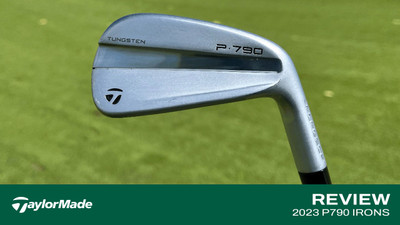TaylorMade P790 2023 Irons - Review
Posted by Jamie Martin on 4th Sep 2023
The other night, I told my smirking tweenager that people used to only watch free-to-air TV. In her post-disruption world, Netflix is TV while free-to-air channels are an anachronism only redeemed by the novelty of ad breaks.
While I have about as much interest in watching the bilge offered by most streaming services as my daughter has in sitting through a rerun of Outback Truckers, her incredulous reaction offered an interesting insight into how one disruptor changes everything.
Golf is by no means immune to disruption.
Back in 2017, Taylormade’s P790 iron was the original disruptor.
It was the Netflix of golf because up until that point, there was no such thing as the player’s-distance iron category.
Combining the shaping of a player’s iron with the ball speed and forgiveness benefits of a game improvement iron, the P790 heralded the beginning of a revolution.
The impressive thing about the original P790 iron and its two follow-up models was the sheer diversity of the players who gamed them.
Scratch handicappers right through to players off a mid-20 mark were sold on the concept. P790 sets even bobbed up on the LPGA and Champions Tour, while the long irons also found a home in the bags of many PGA Tour pros.
But with 2023 heralding the fourth iteration of the iron, I was keen to find out if the TaylorMade P790 was still the clubhouse leader in the very category it established.
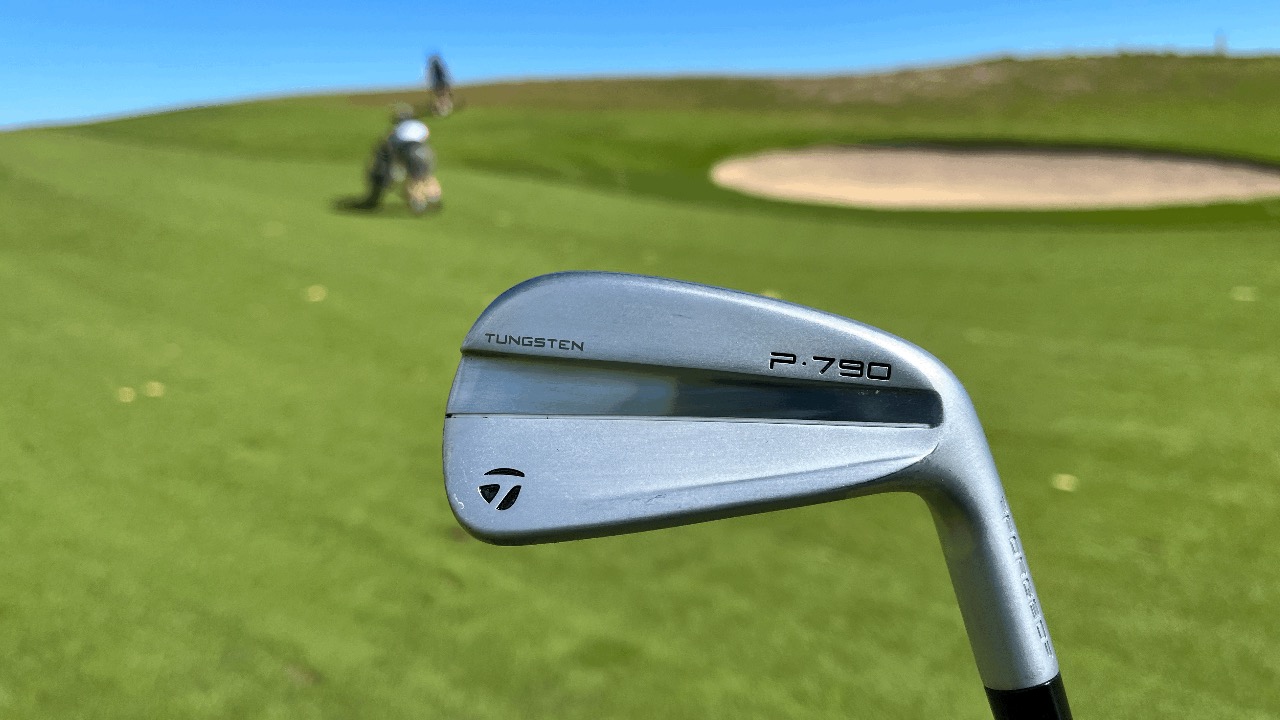
FIRST IMPRESSIONS
I’ve always admired the appearance of TaylorMade’s P790 iron because, to the uninitiated eye at least, they could very well be mistaken for the sleek lines of a blade.
And I’m no orphan on that front either.
Normally, if I dare to raise a topic related to golf equipment with my fellow family members, it is met with derision and a call for me to keep my mouth shut lest I bore them to tears.
But still, I decided to show the P790 iron to my wife, an avowed non-golfer, to get her opinion.
She insightfully described them as “small and shiny” but later remarked the grip looked “weird”, which is exactly what she says to me when I’m watching Ramsay’s Kitchen Nightmares.
And her initial enthusiasm for the P790 had clearly waned when she later told me to box them up and store them “anywhere that’s not in the house”.
However, in my mind the 2023 P790 has a much cleaner appearance than previous models and is the best looking of the bunch.

The signature brushed finish lives on but the highly polished detail found on the previous three P790s has been banished in favour of a much less grandiose satin stripe running through the rear of the head.
In the 4-7 irons, “TUNGSTEN” is laser-inscribed on the back of the head, to highlight the fact there is quite a lot of the semi-precious metal packed up inside the toe.
However, much of the tech has carried over from the previous P790 model.
The blade length, head size and offset haven’t changed and the Thru-Slot Speed Pocket on the sole, which offers forgiveness for low strikes, is still doing its best work on the 4-7 irons.
Size-wise the P790 iron sits at the halfway mark between TaylorMade’s P770 iron and the game improvement Stealth 2 iron (its blade length is 79mm, which is where the 790 comes from).
On the exterior, the most significant transformation is found in the P790 pitching wedge.
It’s been given a reworked sole, with a little more relief taken out of the trailing edge and heel, to align it closer to the sole grind of TaylorMade’s new MG4 wedge.
It’s designed to make the jump from the PW to more lofted wedges much smoother.
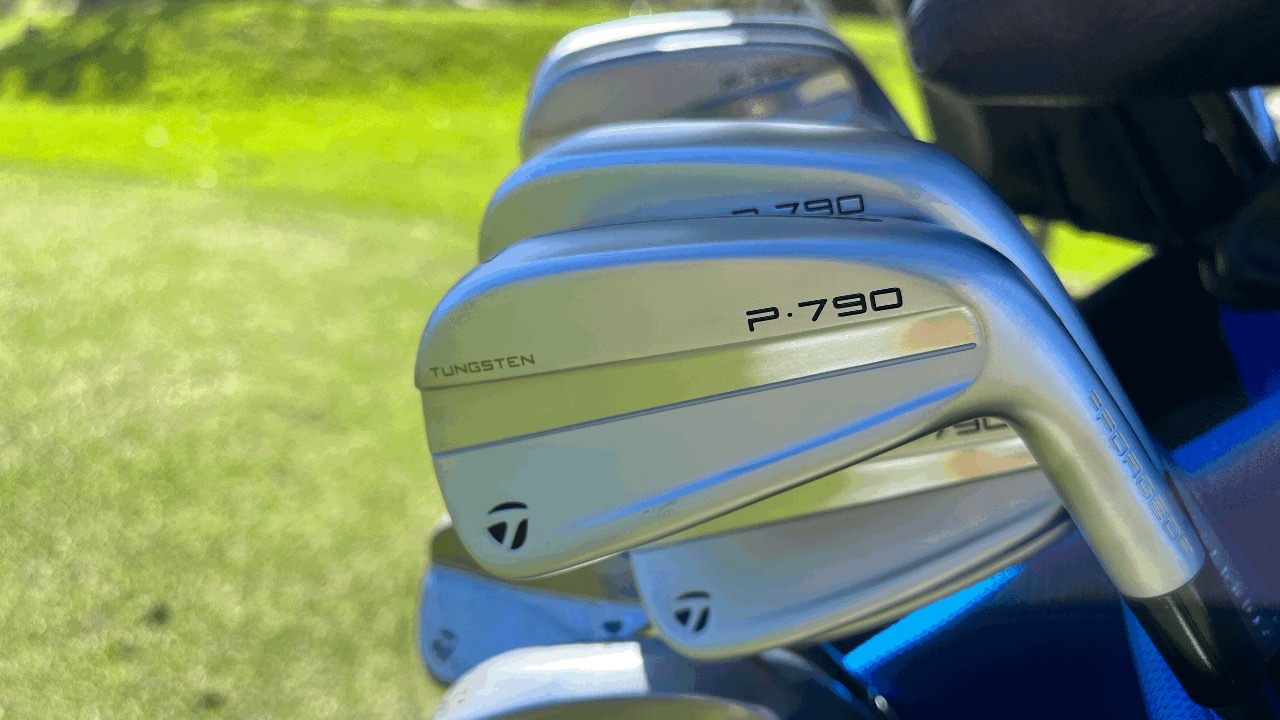
HEAD’S UP
Hollow-bodied irons like the P790 offer club designers the necessary elbow room to get creative, because whatever performance-enhancing structure or design idea they come up with is hidden out of view.
And with A.I. being used in the design process more than ever, things are getting quite weird — in a good way.
The cutaway images of the P790 supplied by TaylorMade reveal radically different internal designs in each iron in the set.
Most noticeable is the new sound stabilisation structure and honeycomb-like detail internally, both of which appear in various guises and locations throughout the set.
But what’s it all mean?
Impact sound and feel have been refined by negating the unique frequencies of vibration that occur in each P790 head.
Meanwhile, the toe-side tungsten weighting (4-7 irons) is also unique, both in size and location. It enables progressive finetuning of the centre of gravity to optimise flight and performance throughout the set.
It would be remiss not to mention that TaylorMade’s SpeedFoam is injected into the body of the P790 club head, via the screw hole on the toe.
The bubble-filled goo dampens vibrations and supports the face, to boost ball speed and improve feel.
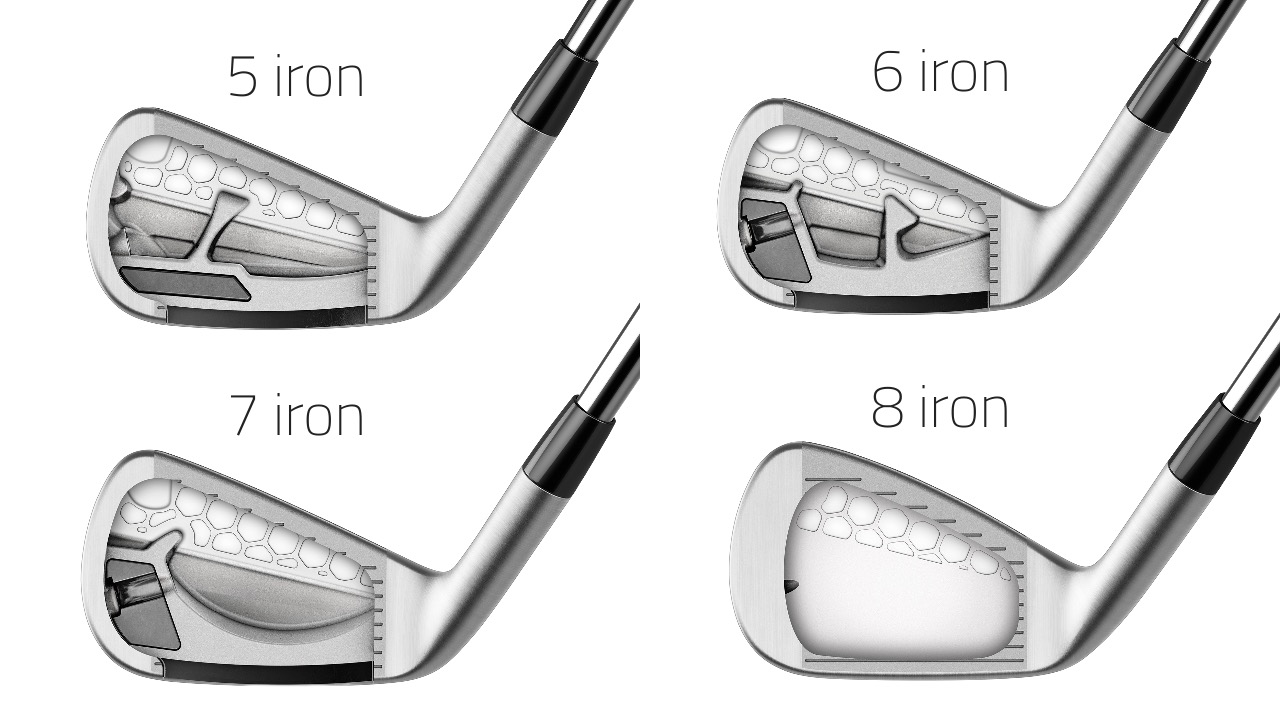
HOW’D THEY PERFORM?
I don’t think I’d be alone in expecting the new P790 iron to be amazingly long.
In my encounters with previous P790 models, the ball went miles. While it’s rarely a bad thing, it did have me questioning whether they were almost too long and fast?
Don’t get me wrong, I’m no distance puritan; I realise many players would play the P790 because they are indeed crazy long.
While the new P790s are definitely still long (nearly one club longer than my current gamers) I did sense the distance differential of the irons had narrowed.
Out of the sweet spot, the irons gave me goosebumps but the speed and forgiveness from off-centre strikes was impressive — it felt like you could stray a long way from the middle before performance diminished too noticeably.
But there didn’t seem to be such a crazy gap between the irons’ peak length and the shorter shots resulting from off-centre strikes. Overall it felt like the new P790 had matured slightly: less prone to overexcitement and projecting a more even temperament.
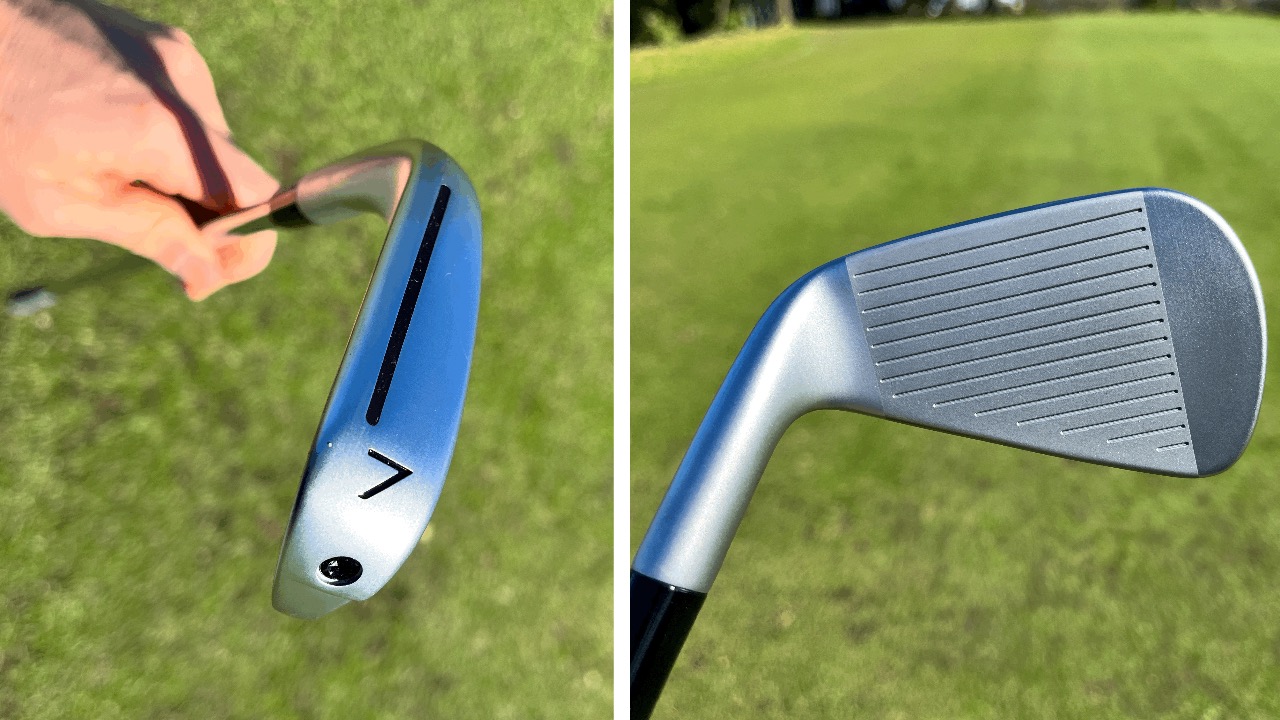
That was the distance part of the player’s-distance equation, but I know what you’re thinking: what about playability?
For their size, P790 irons felt quite agile and easy to manoeuvre.
However, I did find it easier to hit a fade rather than a draw, despite the fact release through the ball felt quite effortless (with the benefit of hindsight, it was probably the offset and hosel combination keeping the face a little squarer that what it felt like).
The width of the sole on P790 irons was very forgiving — an oddity for a true player’s iron — but I felt I could get reasonably steep and loose with the P790 and still get away with it.
The long irons in the P790 iron range did launch high, with the four-iron impressive with both its peak height and its soft descent. But an obvious problem surfaced while pushing into the headwinds of a winter squall — flighting them down proved difficult.
One feature of the new P790 irons that was clearly a standout was the punchy impact sound.
Clearly TaylorMade’s Sound Stabilisation Bars™ were doing their job because the impact sound was kind of like a swoosh you’d normally hear at an air show.
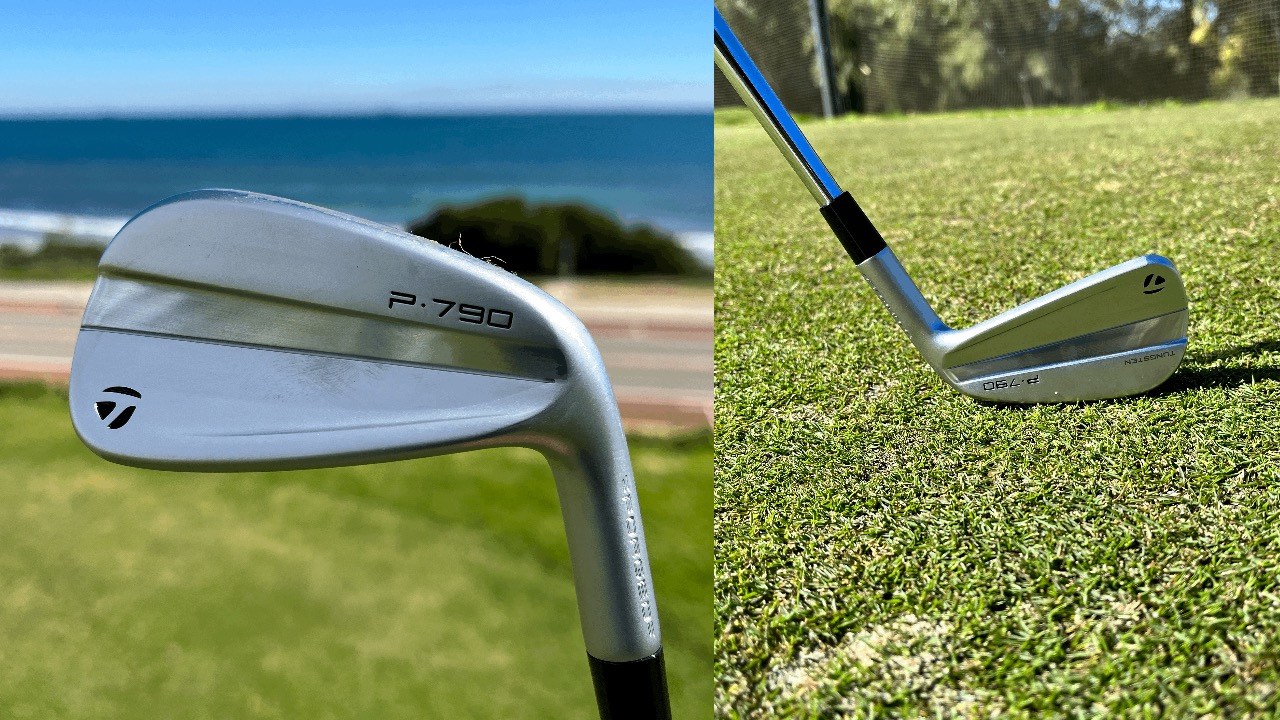
THE FINAL WORD
P790 irons have always had a comforting look about them, the kind that makes you believe that golf might not be so hard after all.
For the first few shots there’s a sense that you’re hitting a pure and shapable player’s iron.
Then when you snipe one thin or hit it off the heel or toe, there’s a palpable sense of relief that you’re not actually hitting a player’s iron.
That’s the essence of the P790 iron experience; it is truly an iron that is the sum of its parts.
Once the sole contender in the player’s-distance iron category, P790 irons are pitted against more competition than ever before.
But in my opinion, the new P790 is a decent upgrade on the third generation and more than stakes its claim as still being one of the top irons in the category.

THE VERDICT
HIGH FIVES
• Best looking of the P790 models
• Distance dispersion seemed narrower
• Sole design is forgiving
• Feel and sound well executed
BUMMERS
• Long irons difficult to flight down
• Slightly more difficult to draw than fade the ball

|
Written by Jamie Martin Jamie Martin is currently locked in a battle to keep his handicap hovering around the mid-single digits. Despite his obvious short-game shortcomings, Jamie enjoys playing and writing about every aspect of golf and is often seen making practice swings in a mirror. |

